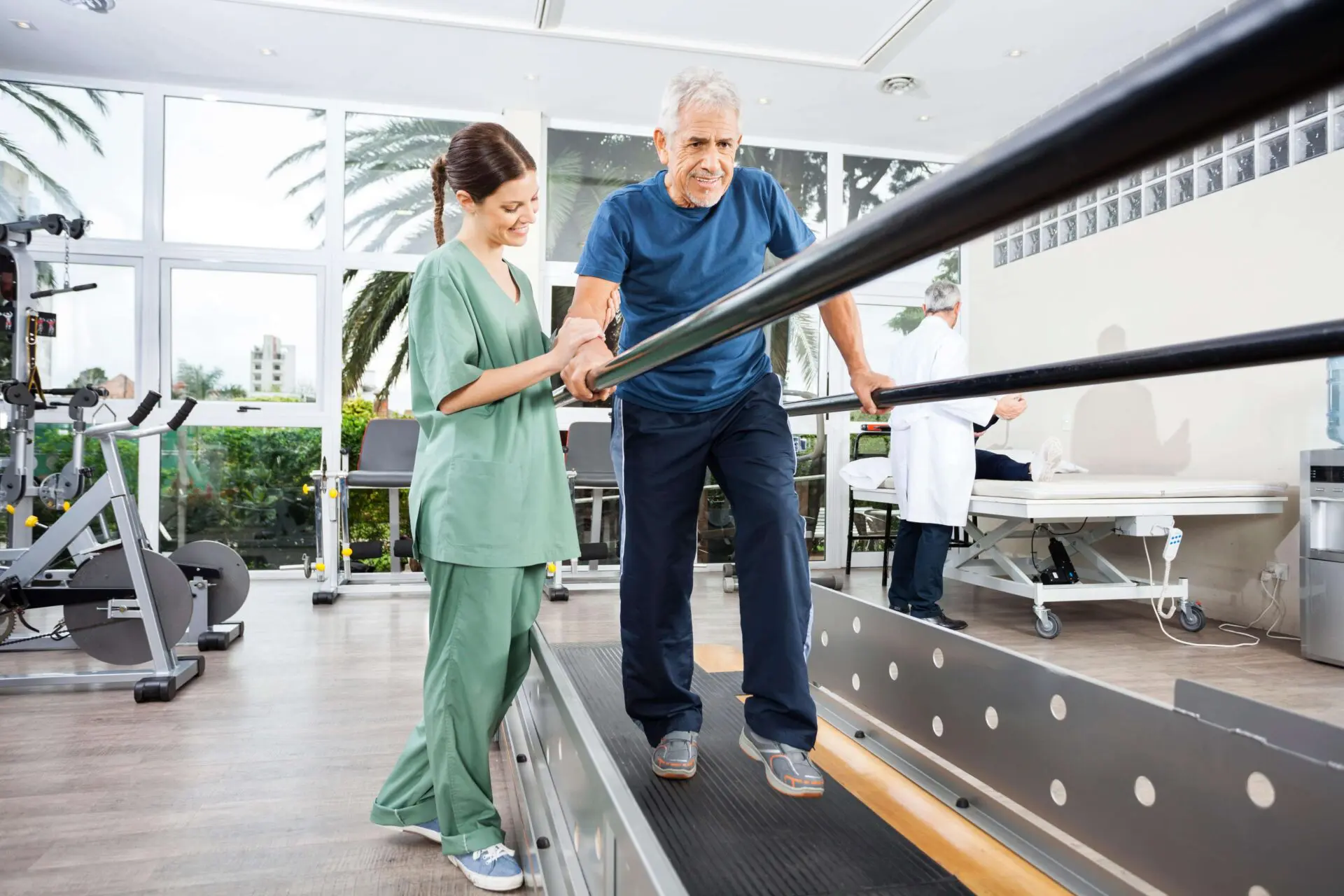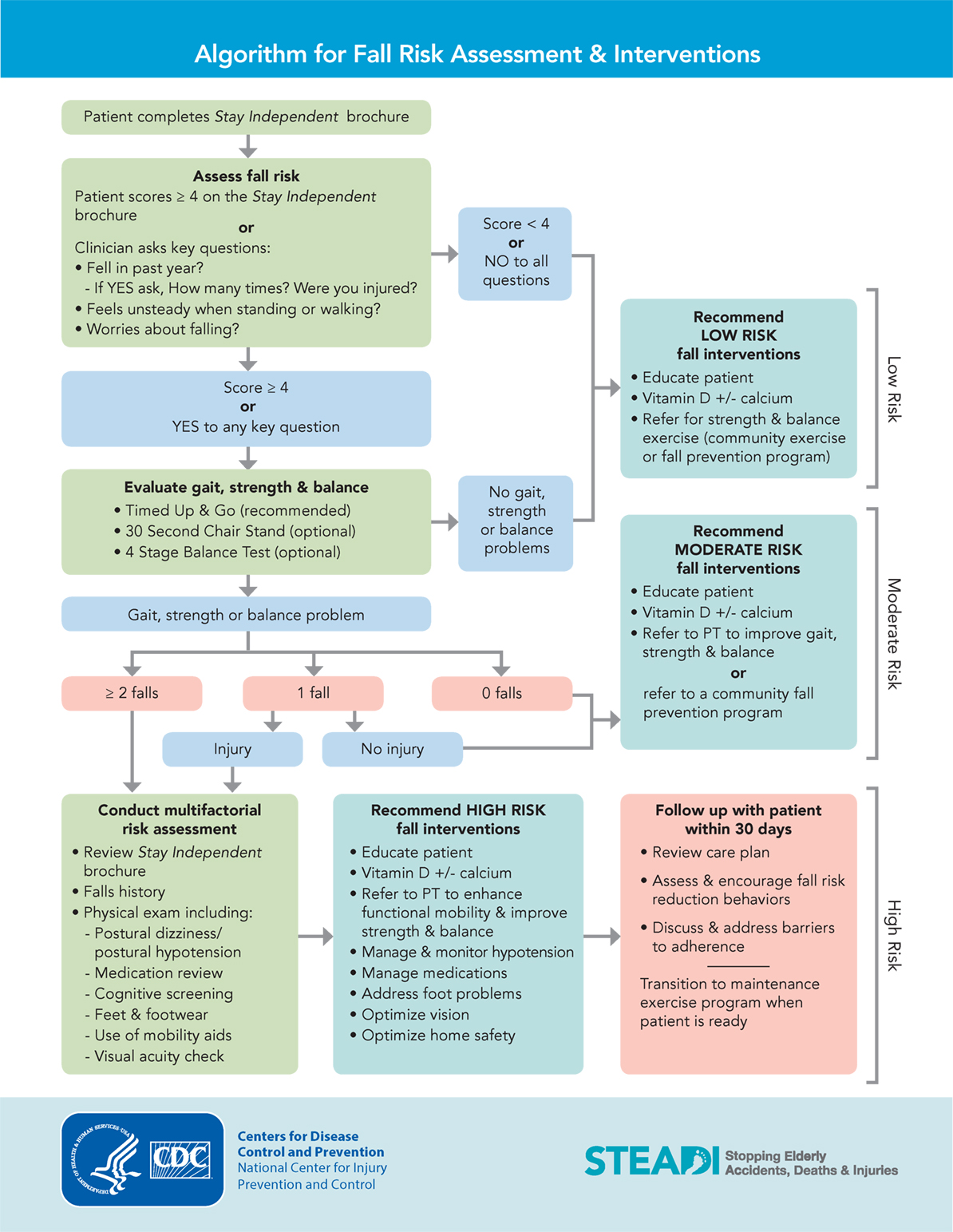Excitement About Dementia Fall Risk
Excitement About Dementia Fall Risk
Blog Article
Fascination About Dementia Fall Risk
Table of ContentsDementia Fall Risk Can Be Fun For EveryoneGetting My Dementia Fall Risk To Work7 Easy Facts About Dementia Fall Risk ShownThe 10-Second Trick For Dementia Fall Risk
A loss threat assessment checks to see how most likely it is that you will fall. It is primarily done for older adults. The evaluation typically consists of: This includes a collection of questions regarding your total health and wellness and if you've had previous drops or problems with balance, standing, and/or strolling. These devices evaluate your stamina, equilibrium, and stride (the way you stroll).STEADI includes testing, examining, and intervention. Treatments are recommendations that may decrease your danger of dropping. STEADI consists of three steps: you for your risk of succumbing to your danger elements that can be improved to attempt to avoid falls (for example, equilibrium problems, damaged vision) to decrease your danger of dropping by utilizing effective strategies (as an example, supplying education and resources), you may be asked a number of inquiries including: Have you fallen in the previous year? Do you really feel unstable when standing or walking? Are you fretted about falling?, your provider will certainly check your strength, equilibrium, and stride, making use of the adhering to fall assessment tools: This test checks your gait.
Then you'll take a seat again. Your copyright will examine exactly how long it takes you to do this. If it takes you 12 seconds or even more, it might suggest you are at greater threat for a loss. This examination checks strength and balance. You'll being in a chair with your arms crossed over your chest.
Move one foot halfway ahead, so the instep is touching the large toe of your other foot. Relocate one foot totally in front of the various other, so the toes are touching the heel of your other foot.
The Best Strategy To Use For Dementia Fall Risk
Many falls take place as a result of multiple contributing variables; for that reason, handling the threat of dropping begins with determining the aspects that add to fall danger - Dementia Fall Risk. Several of one of the most relevant risk factors include: History of previous fallsChronic clinical conditionsAcute illnessImpaired stride and balance, lower extremity weaknessCognitive impairmentChanges in visionCertain risky medications and polypharmacyEnvironmental factors can also raise the danger for falls, consisting of: Poor lightingUneven or harmed flooringWet or unsafe floorsMissing or damaged handrails and order barsDamaged or incorrectly fitted devices, such as beds, wheelchairs, or walkersImproper use of assistive devicesInadequate guidance of the individuals staying in the NF, consisting of those who exhibit hostile behaviorsA effective autumn risk management program calls for a detailed professional analysis, with input from all participants of the interdisciplinary team

The care plan must likewise include interventions that are system-based, such as those that advertise a risk-free setting (proper lighting, handrails, get bars, etc). The effectiveness of the interventions must be reviewed periodically, and the treatment plan changed as required to reflect changes in the loss risk analysis. Applying a fall risk monitoring system using evidence-based finest method can lower the occurrence of drops in the NF, while restricting the potential for fall-related injuries.
All About Dementia Fall Risk
The AGS/BGS standard advises evaluating all adults aged 65 years and older for fall threat every year. This testing contains asking patients whether they have dropped 2 or even more times in the past year or go to my blog looked for clinical focus for a loss, or, if they have not dropped, whether they really feel unstable when strolling.
People that have actually dropped when without injury must have their equilibrium and gait evaluated; those with stride or equilibrium problems should receive extra analysis. A history of 1 loss without injury and without stride or balance issues does not require more analysis past ongoing annual fall danger screening. Dementia Fall Risk. A loss danger evaluation is needed as component of the Welcome to Medicare evaluation

An Unbiased View of Dementia Fall Risk
Recording a drops history is just one of the high quality indications for autumn avoidance and monitoring. A vital part of danger evaluation is a medication review. Numerous classes of drugs enhance loss threat (Table 2). copyright medications in certain are independent forecasters of falls. These drugs have a tendency to be sedating, modify the sensorium, and harm balance and stride.
Postural hypotension can usually be eased by minimizing the dosage of blood pressurelowering medicines and/or stopping medications that have orthostatic hypotension as a side effect. Usage of above-the-knee assistance tube and sleeping with the head of the bed boosted might likewise minimize postural reductions in blood pressure. The preferred aspects of a fall-focused physical exam are revealed in Box 1.

A TUG time better than or equivalent to 12 secs recommends high loss risk. The 30-Second Chair Our site Stand test examines lower extremity toughness and balance. Being unable to stand from a chair of knee elevation without utilizing one's arms indicates boosted fall risk. The 4-Stage Balance examination examines fixed equilibrium by having click now the person stand in 4 positions, each considerably a lot more difficult.
Report this page